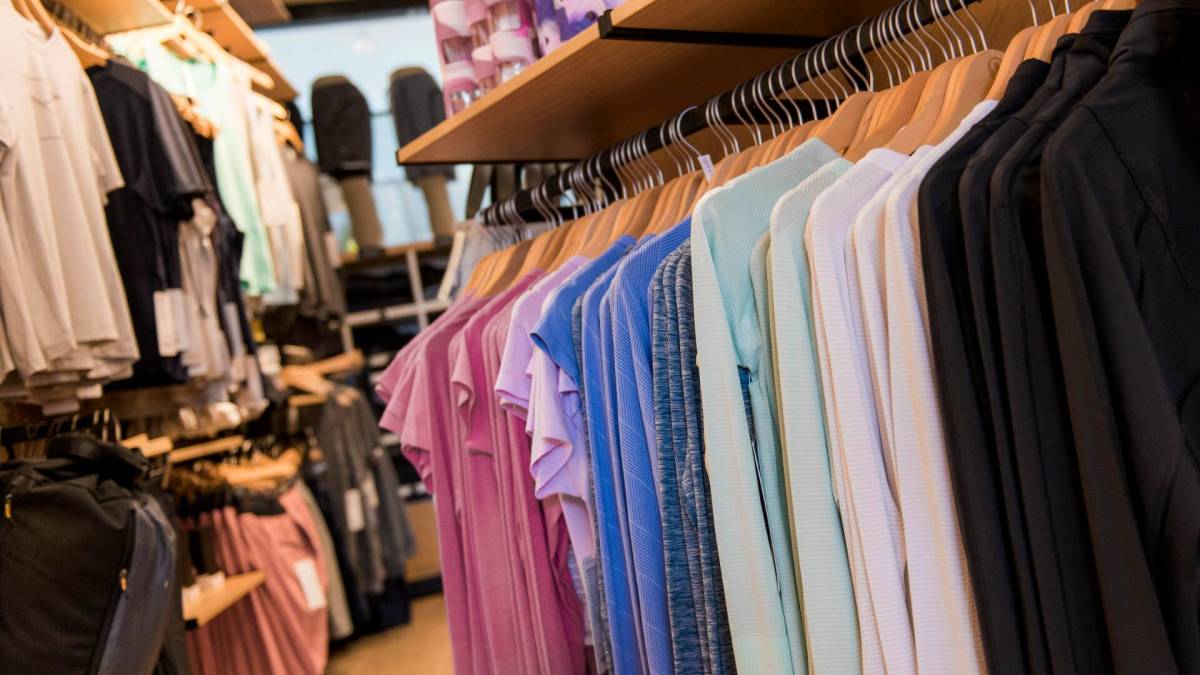Lululemon (LULU) , famous for its luxury athletic wear, is suffering from a drastic change in customer behavior that’s impacting sales, and its CEO has launched a plan to reverse the alarming trend.
In Lululemon’s second-quarter earnings report for 2025, it revealed that while its net revenue in the Americas increased by 1% year-over-year, its comparable sales in the region declined by 4%.
Also, according to recent data from Placer.ai, customer visits in Lululemon’s same-store locations dropped by a whopping 8.5% year-over-year during the quarter.
The drop in sales and foot traffic comes after Lululemon told its investors during an earnings call in June that it would soon implement “modest” price increases on a small portion of its items to help mitigate the impact of heightened tariff rates.
Many consumers nationwide have recently adjusted their shopping habits as tariffs threaten to make everyday goods more expensive.
A recent survey from market research company Numerator found that 81% of consumers are delaying nonessential or expensive purchases, buying fewer imported goods, searching for sales and coupons, and switching to shopping at lower-priced retailers and discount stores to avoid paying inflated prices caused by tariffs.

Image source: Qilai Shen/Bloomberg via Getty Images
Lululemon CEO identifies “root cause” of the problem
During an earnings call on Sept. 5, Lululemon CEO Calvin McDonald said that the company is “not happy” with its performance in the U.S., flagging that consumer demand is declining.
“The overall market for premium athletic wear in the U.S. remains challenging, with declines continuing in quarter two,” said McDonald. “Consumers are spending less on apparel overall, spending less in performance activewear, and are being more selective in their purchases, seeking out truly new styles.”
He said that Lululemon’s core brands, like Scuba, Softstreme, and Dance Studio, are where the company sees “fatigue with the consumer,” especially its loyal “high-value consumer.”
McDonald highlighted that a lack of “newness” in some of Lululemon’s apparel categories has been the “root cause” of lower-than-expected sales.
“I now believe we have let our product life cycles run too long within many of our core categories, particularly in lounge and social,” said McDonald. “We’ve become too predictable within our casual offerings and missed opportunities to create new trends.”
He said Lululemon’s lounge and social product offerings “have become stale and have not been resonating with guests” amid growing competition.
Related: Ulta Beauty to expand major section in stores customers love
“My view now is that we have relied on the same product playbook across certain categories for too long,” said McDonald. “The competitive landscape is different today than it was even two or three years ago. While no single competitor is having a meaningful impact on our business, there are now many players in the market.”
McDonald said it is “imperative” for Lululemon to now offer “the right balance’’ of its core product and new offerings going forward, a change the company’s design team is working on completing by next year.
“Some areas of focus for our new design team include maintaining our momentum in performance activities, designing into several new products across lounge and social, and giving a fresh perspective to some of our most iconic items,” said McDonald. “As a result of their work, we intend to increase new styles as a percentage of our overall assortment from the current 23% to approximately 35% next spring. We will continue to gauge guest behavior and adjust this penetration in future seasons based upon their response.”
Lululemon plans a harsh change in stores
As Lululemon plans to further innovate its product offerings, customers can expect to pay higher prices for items as the company battles tariffs and the end of a trade rule called “de minimis,” which allowed goods from China that are less than $800 to enter the U.S. duty-free with minimal inspections.
Related: Struggling mall retail chain makes comeback
“We are navigating increased costs related to tariffs and the removal of the de minimis exemption,” said Lululemon Chief Financial Officer Meghan Frank during the earnings call. “Given these factors, we believe it’s appropriate to be prudent in our planning and financial outlook for the remainder of the year. We are taking actions in both the near-term and long-term to mitigate the increased tariff costs, including strategic pricing actions, supply chain initiatives, including vendor negotiations, and enterprise-wide expense savings initiatives.”
More Retail:
- Target has another big problem amid alarming customer behavior
- Dollar General announces big store change to win back customers
- Amazon pulls the plug on a free service for customers
She said the company is still introducing “modest price increases” on a small portion of its product assortment, a change that will continue to roll out over the next few months.
“We continue to look at pricing,” said Frank. “I would say those actions are in the process of rolling out, and we’re pleased with them to date. That’s still in front of us. We’ll continue to look at it as a lever as we move through the second half of this year and into next.”
The price increases come during a time when consumer sentiment is dropping after higher tariff rates went into effect Aug. 7. According to recent data from the University of Michigan, consumer sentiment fell by 5% at the beginning of August, the first decrease in four months.
“The economy will likely stay in low gear in the second half of 2025, then gain traction as fiscal policy becomes more supportive in 2026,” said Comerica Bank Chief Economist Bill Adams in a statement to TheStreet.
Amid weak consumer demand and future price increases, Lululemon now expects its U.S. revenue to decline by 1% to 2% for the rest of 2025.
Related: Walmart makes drastic move to keep customers from fleeing stores
#Lululemon #CEO #raises #red #flag #customer #behavior #stores